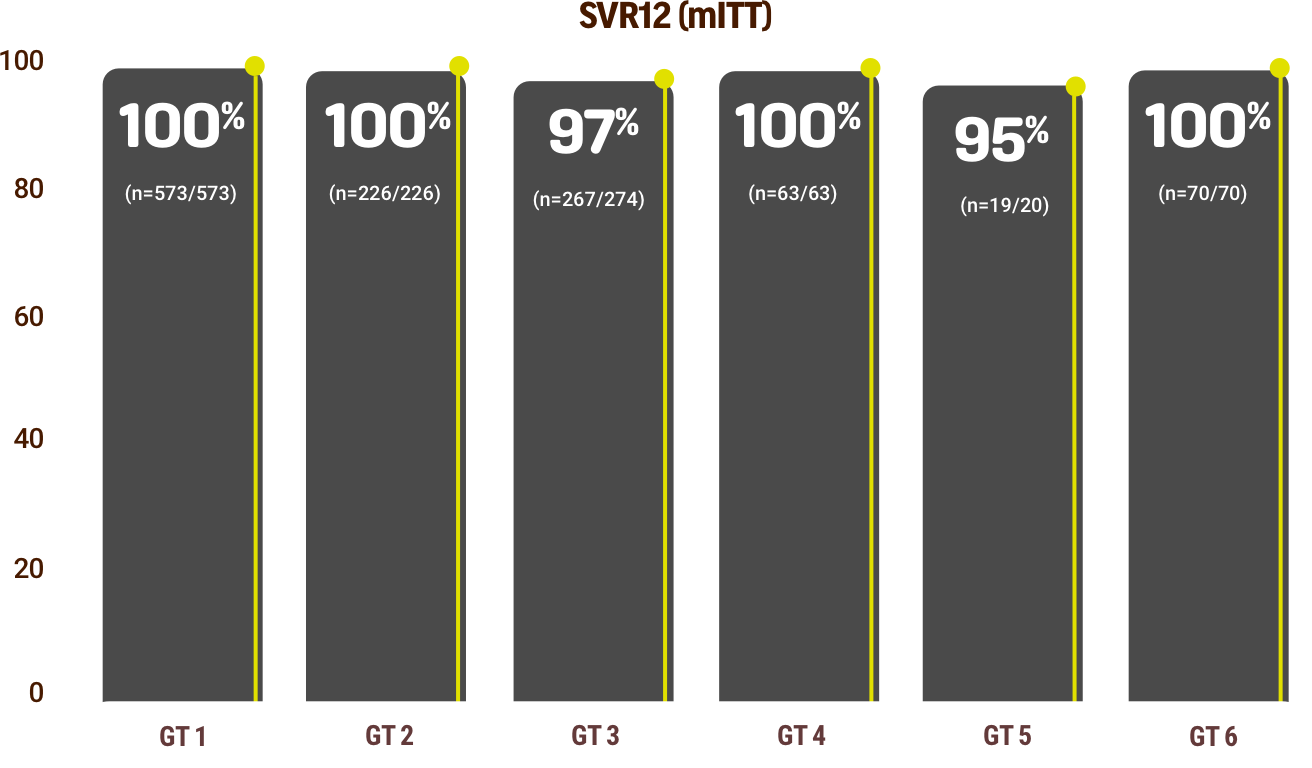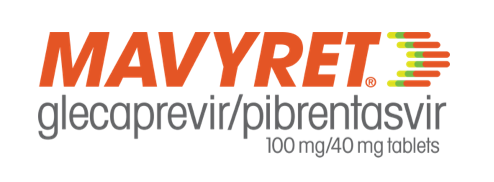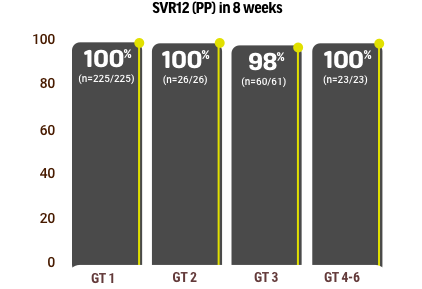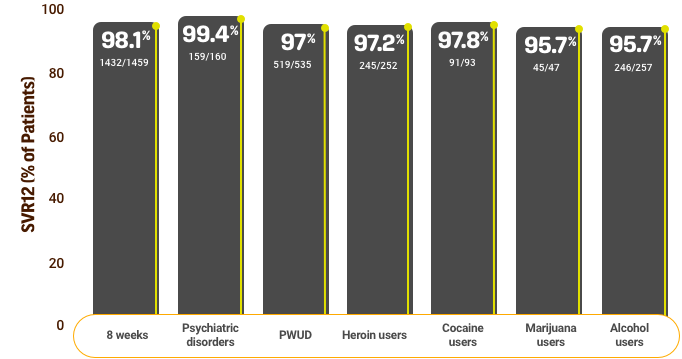REAL-WORLD EFFECTIVENESS IN THE LARGEST MAVYRET META-ANALYSIS2
Of 12,531 patients treated with MAVYRET (18 studies), 3657 were clearly characterized as TN, NC and treated for 8 weeks according to label (9 studies)2
| 99% | CURE RATE |
| (n=3657, mITT SVR12) In GT 1-4, TN, NC patients |
Cure = sustained virologic response (SVR12); HCV RNA <LLOQ at 12 weeks after the end of treatment.1

METHODOLOGY2
Real-world studies reporting SVR12 in adults with HCV infection (n ≥20) treated with MAVYRET were identified in journal publications from January 1, 2017, to February 25, 2019, and congress presentations through April 14, 2019. The 18 identified cohorts included 7 studies from Europe (Spanish HepaC Cohort, German Hepatitis-C Registry, Italian MISTRAL, England NHS Registry, Italian NAVIGATORE-Lombardia, Scottish HCV Registry, Austrian Real-life Cohort), 6 in Japan (Japan Registry, Japan Tamori, Japan Uemura, 2 Japan DAA-experienced, Japanese GT2 retreatment), 3 in the United States (VA Registry, TRIO, Kaiser Permanente), and 2 multicountry studies (Global G/P PMOS, TARGET HCV). Of the 12,531 adults with chronic HCV infection included in the 18 studies, patients who were TN, NC, and who received on-label treatment with MAVYRET for 8 weeks (n=3657), mITT; reported in 9 of the 18 studies were included meta-analysis. Random-effects meta-analysis was used to determine SVR12 rates. The mITT population included ITT population (ie, patients treated with MAVYRET who had SVR12 data available, discontinued early, or were lost to follow-up) and excluded those with nonvirologic failure.
LIMITATIONS2
These real-world studies are retrospective, are observational in nature, and are not in the MAVYRET Prescribing Information. Results of these cohorts may differ from those observed in clinical practice, and the included studies may have differed in regard to their study design and patient characteristics. The level of detail reported across the individual studies was inconsistent, particularly with mITT reporting of SVR12 rates. There were insufficient data available to analyze SVR12 rates in patients with HCV GT 5 or GT 6 infection. The reporting of safety information in this analysis varied widely by study design and data availability. Please refer to MAVYRET’s full Prescribing Information for clinical study safety.

HIGH CURE RATES ACROSS A WIDE RANGE OF PATIENTS1,3
HIGH CURE RATES IN 8 WEEKS FOR ALL
GENOTYPES1,3

The efficacy of MAVYRET in adult subjects with GT 3b infection was evaluated in 2 trials conducted in China, Singapore, and South Korea. Across both trials, subjects with GT 3b infection had a numerically lower SVR12 rate. GT 3b is uncommon in the US (<1% of HCV GT 3 infections).1
Integrated, pooled analysis of GT 1-6, TN adult subjects from 8 phase 2/3, open-label clinical trials. The primary endpoint of each study was SVR12.3
ENDURANCE-11,5
GT 1, TN or PRS-TE, NC subjects (± HIV-1 coinfection) were randomized to receive MAVYRET for 8 (n=351) or 12 (n=352) weeks.
ENDURANCE-31,5
GT 3, TN, NC subjects were randomized (2:1) to receive MAVYRET (n=233) or SOF + DCV (n=115) for 12 weeks; additional subjects (n=157) were subsequently enrolled and nonrandomly assigned to receive MAVYRET for 8 weeks.
ENDURANCE-5,61,6
GT 5-6, TN or PRS-TE, NC or CC subjects (n=84) received MAVYRET for 8 (n=75) or 12 (n=9) weeks.
EXPEDITION-21,7
GT 1-6, TN or PRS-TE, NC or CC subjects with HIV-1 and ART naïve or on a stable ART regimen received MAVYRET for 8 (n=137) or 12 (n=16) weeks. Treatment-experienced GT 3–infected subjects were excluded.
EXPEDITION-58
GT 1-6, TN or PRS-TE, NC or CC subjects with CKD stage 3b, 4, or 5 received MAVYRET for 8 (n=84), 12 (n=13), or 16 (n=4) weeks.
EXPEDITION-81,9
GT 1-6, TN, CC subjects (n=343) received MAVYRET for 8 weeks.
SURVEYOR-1, PART 2 (PHASE 2)10,11
GT 1, 4-6, TN or PRS-TE, NC or CC subjects received MAVYRET for 8 (n=117) or 12 (n=332) weeks.
SURVEYOR-2, PARTS 2 AND 4 (PHASE 2)1, 12-14
GT 2-6, TN or PRS-TE, NC or CC subjects were randomized to receive MAVYRET for 8 (n=286), 12 (n=48), or 16 (n=4) weeks.








